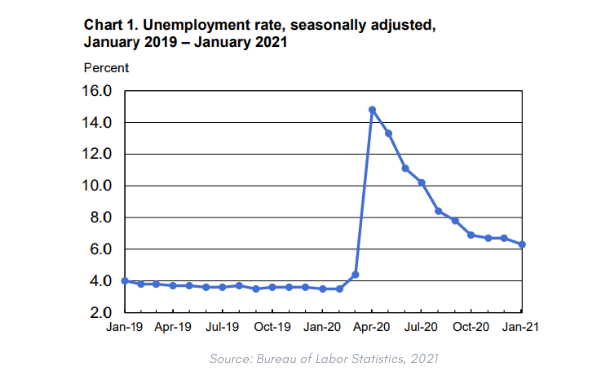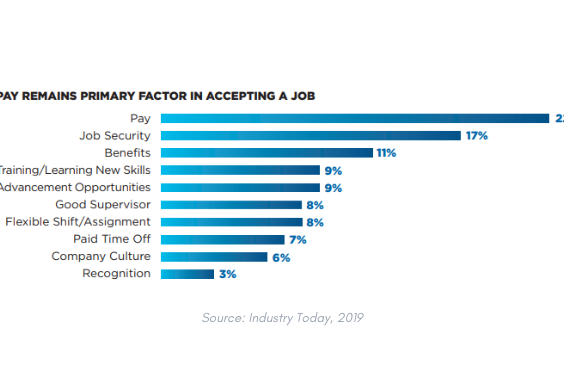Updated on 29 August 2022
What to Expect?
Blue collar workers in the logistics industry are in high demand. The talent shortage in the logistics industry combined with the e-commerce boom in recent years makes it crucial to attract, train, and retain qualified logistics workers to ensure warehouses can keep up with consumers. Learn what steps you can take to better appeal to warehouse workers.
An entire sector of the global workforce exists en masse, yet few understand how it works. Blue-collar workers are the backbone of industrialization. We believe that every group of employees deserves a certain focus on their needs. When looking into the blue-collar industry, there are many topics not yet discovered. Let’s dig deeper into these topics on our blog.
What Is a Blue-Collar Worker
The blue-collar industry consists of people performing manual labor. A blue-collar worker may be an employee in a manufacturing or processing facility or a warehouse worker in logistics. Physical work such as farming, landscaping, construction, and waste removal are also part of this industry.
Though often blue collar workers are confused with unskilled laborers, they are in fact some of the most skilled manual workers, including certified electricians and plumbers.
Good-to-Know: The Origin of the Blue Collar
You likely have a white shirt in your closet that you tirelessly work to keep crisp and bright. Imagine wearing that shirt 100 years ago while welding the frame of the Empire State Building or while weaving cotton in a hot facility. Sweat would drench and stain your shirt collar.
Historically, daily laundering was not an option for the working class. For this reason, manual laborers preferred darker colors to mask their soiled work clothes. The popularity of denim with miners in the late 19th century established blue as the go-to color for uniforms, overalls, and collar colors for manual workers.
The Current Situation for Blue-Collar Logistics Workers
As a trainer, manager, or human resources professional in the blue-collar industry, you are familiar with your specific sector or company. But understanding the bigger picture of the entire industry can increase your profitability and make you more competitive with new hires. For example, warehouse professionals in the logistics industry need to understand their role within the entire supply chain. As a result, they can build the warehouse of the future and stay competitive in the industry 4.0 era.
In 2019, the United States saw tremendous job growth. The nation saw unemployment rates drop from 4.0% down to 3.5%. Before the onset of COVID-19, the US was experiencing the lowest jobless rate since 1969. Furthermore, Trading Economics data shows that average hourly earnings rose by 5.4% from 2020. However, the ongoing impact of COVID-19 contributed to 6.3% unemployment in January 2021. Altogether, the transportation, warehousing, and manufacturing sectors lost 38,000 jobs following the 8-month 2020 growth period. Still, transportation and warehousing employment was higher in January 2021 than in February 2020 by 97,000 and 137,000 jobs, respectively. Additionally, manufacturing employment is up by 803,000 jobs since April 2020, reported the Bureau of Labor Statistics, 2021.

Blue-collar workers desire more pay increases to offset the physically demanding work. In addition to offering higher wages, employees are requesting better benefits and career advancement opportunities. A 2019 survey by Industry Today of blue-collar workers found that 78% of turnover had nothing to do with wages. Instead, a positive working environment and opportunities for professional growth are key to attracting and keeping workers (See: Social Sustainability in Warehouses – How to Prevent High Fluctuation).

You should anticipate continued hiring competition in 2022. The analysis shows that the working-age population is slowly growing, and of that age bracket, even fewer are pursuing blue-collar work. Since the job pool will remain small, employers may experience difficulty recruiting and retaining current employees.
Logistics, followed by sales and customer service, jobs are in high demand. An average of 30 viable candidates apply for blue-collar jobs in India. Nevertheless, the industry is still male-dominated. HR Technologist reports that applications that specify sex, 1/4 of applicants are female.
See: How To Get More Female Workers To Overcome Talent Shortage.
The Challenges Today in the Logistics Industry
1. High attrition rate in high-density warehouse areas
As blue-collar workers search for the best overall work environment and benefits package, employers are paying for the price of turnover and competition. In regions with many logistics jobs or warehouses, blue-collar workers are prone to change employers for small increases in hourly pay.

However, employees are willing to work for lower pay if their performance receives high ratings. Turnover is especially taxing if your floor managers also perform HR functions.
2. Atypical shifts do not fit into the life of employees
Blue-collar industries traditionally operate three shifts a day 24/7. Afternoon and overnight shifts tend to be less desirable for parents. In addition to that, you can find many studies that discovered a correlation between shift work and mental diseases.
3. Outdated training process
Many managers are not equipped to perform HR functions while simultaneously teaching the advancements of technology. There is often a lack of time for proper training as trainers are usually also working on-site and do not have enough time to educate the team. Employers need to invest in blue-collar training to efficiently onboard and engage blue-collar workers. Hiring effective trainers for logistics workers ensures floor managers and experienced workers are not taken away from their work (See: How to Recruit the Ideal Trainer for Your Warehouse Associates (With a Free Template).
Moreover, digital training methods keep the training for warehouse workers in logistics short, effective, and organized. You can learn more about how digital training methods improve training and lower labor costs by requesting a free demo and consultation for your warehouse.
4. Dwindling workforce
Much of the current blue-collar workforce consists of Baby Boomers that will continue to retire through 2030, creating employment gaps. Consequently, the younger generation entering the workforce is obtaining college degrees and thus not pursuing blue-collar labor.
5. Demand surges
The rapid growth of e-commerce in the past ten years has created a boom for blue-collar jobs in logistics, transportation, and warehouses. An additional 452,000 jobs were needed in 2018-2019 compared to 180,300 in 2013. According to the World Bank, online shopping was growing at a pace of 4.5% per year before the pandemic. Major e-commerce sellers and brick-and-mortar stores that met consumers’ digitalized retail needs, such as online payments and quick deliveries, have thrived during the pandemic. For example, Amazon’s third-quarter sales rose by 37% in 2020 compared to 2019.

In the future, social commerce – e-commerce conducted directly via online social platforms like Instagram – will account for 13.1% of total e-commerce sales in 2021. For example, China’s social commerce market will be worth $363.26 billion USD in 2021, more than triple its value in 2018.

The High Demand for Blue-Collar Workers in Logistics
The role of blue-collar workers will continue to rise in the future. Outsourcing of factory jobs to China is on the decline. U.S.-based manufacturers are bringing production home. The American consumer, along with energy prices and Chinese wage increases, are driving the change in behavior.
After remaining flat most of 2018, manufacturing jobs saw a spike in payroll gains into 2020. The demand for oil drilling equipment accounts for a portion of the growth. Likewise, transportation and warehousing saw a correlating increase of 2.7% year over year.
The continual expansion of e-commerce and the talent shortage in the logistics industry will drive the need for more logistics professionals, like warehouse workers and truck drivers, especially amidst COVID-19.
The New Option: The Blue-Collar Executive
Roughly only 35% of hourly workers find satisfaction with advancement opportunities. For this reason, as competition increases to retain quality employees, it is imperative to develop plans to promote within and help employees with their career planning.
Gallup survey and Higginbotham
Providing career advancement into blue-collar executive roles offers you key benefits:
- Employees whose leaders engage with them regularly and whose workplace honors individual strengths experience little to no burnout.
- Training for career advancement stimulates employee engagement.
- Promoting within ensures the new manager has hands-on experience with your company’s product or service.
- Credibility and respect of coworkers are quickly established as a result of working their way up the ladder.
Evolving Technology in the Blue-Collar Industry
Over 70% of blue-collar executives feel technology is the most significant factor impacting the future. Given the right tools, technologies, and skills, procedural workers can add value to the bottom line. Blue-collar workers will work hand-in-hand with technology, not compete against it. Logistics workers benefit from digital training tools and new smart warehouse technologies that help warehouses thrive in the industry 4.0 era.
Executives predict that technology will handle 39% of routine tasks over the next five years. Moreover, blue-collar workers will continue to oversee automation and control 74% of complex decisions.
The current generation of logistics workers entering the blue-collar workforce is tech-savvy. They grew up with computers and smartphones. For this reason, utilize their combination of soft and hard skills. If you want to meet the increasing demand for new workers, it will be essential to make use of technology in the learning and development of new and existing employees.
Leverage technology to gain efficiencies and increase your hiring potential. If you don’t, the next generation of blue-collar workers will experience dissatisfaction with outdated methods. For example, blue-collar workers are more likely to use their smartphones to search for jobs than a computer. As a result, making job postings mobile-friendly and easy to engage with is crucial.
The current challenge of a dwindling blue-collar workforce will not disappear overnight. Therefore, it is time to work smarter towards the worker’s needs: Attract new employees by posting jobs online. Incorporate technology via training to stimulate tech-savvy workers. Acknowledge, reward, and promote valuable members of the team.
